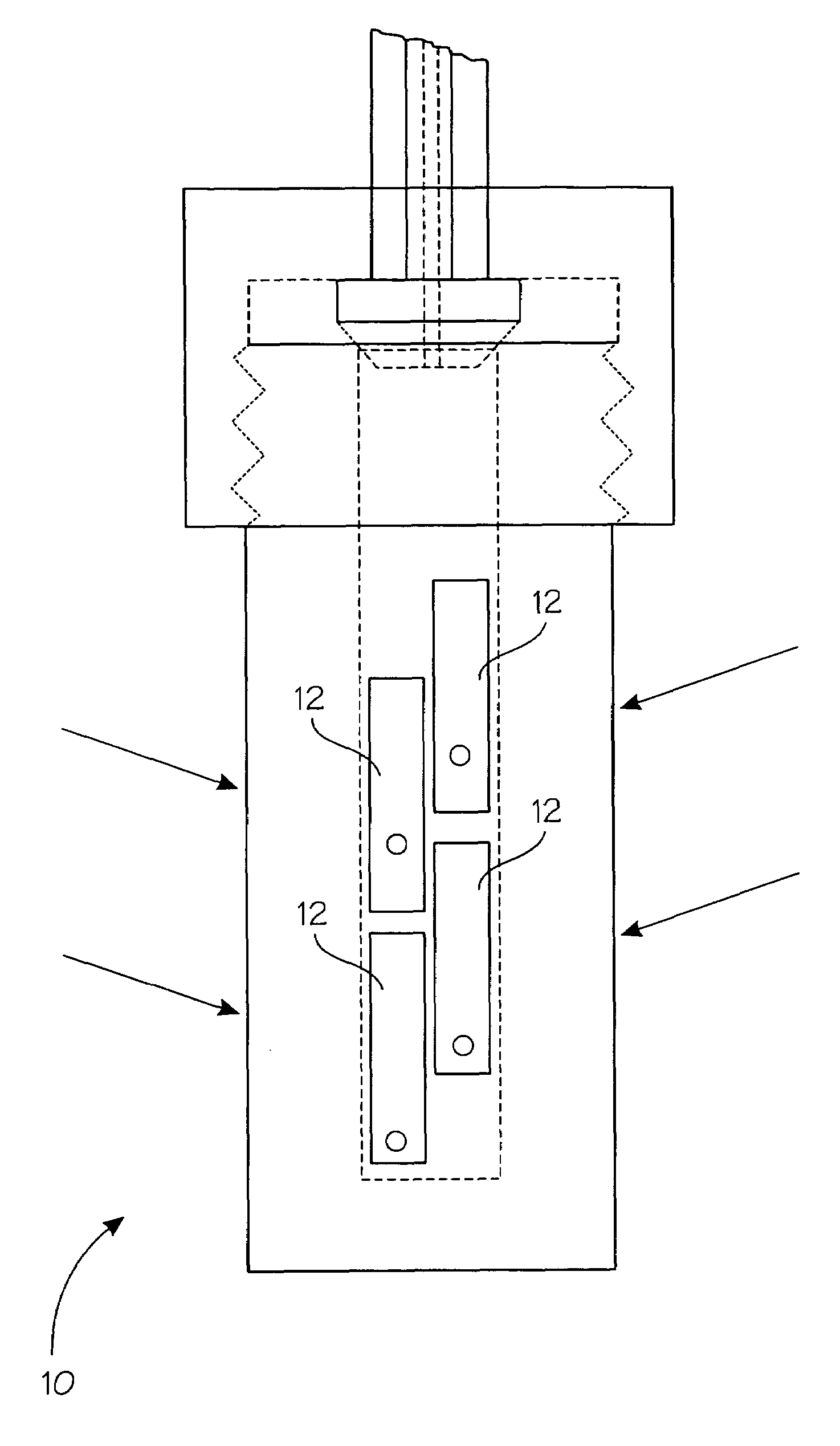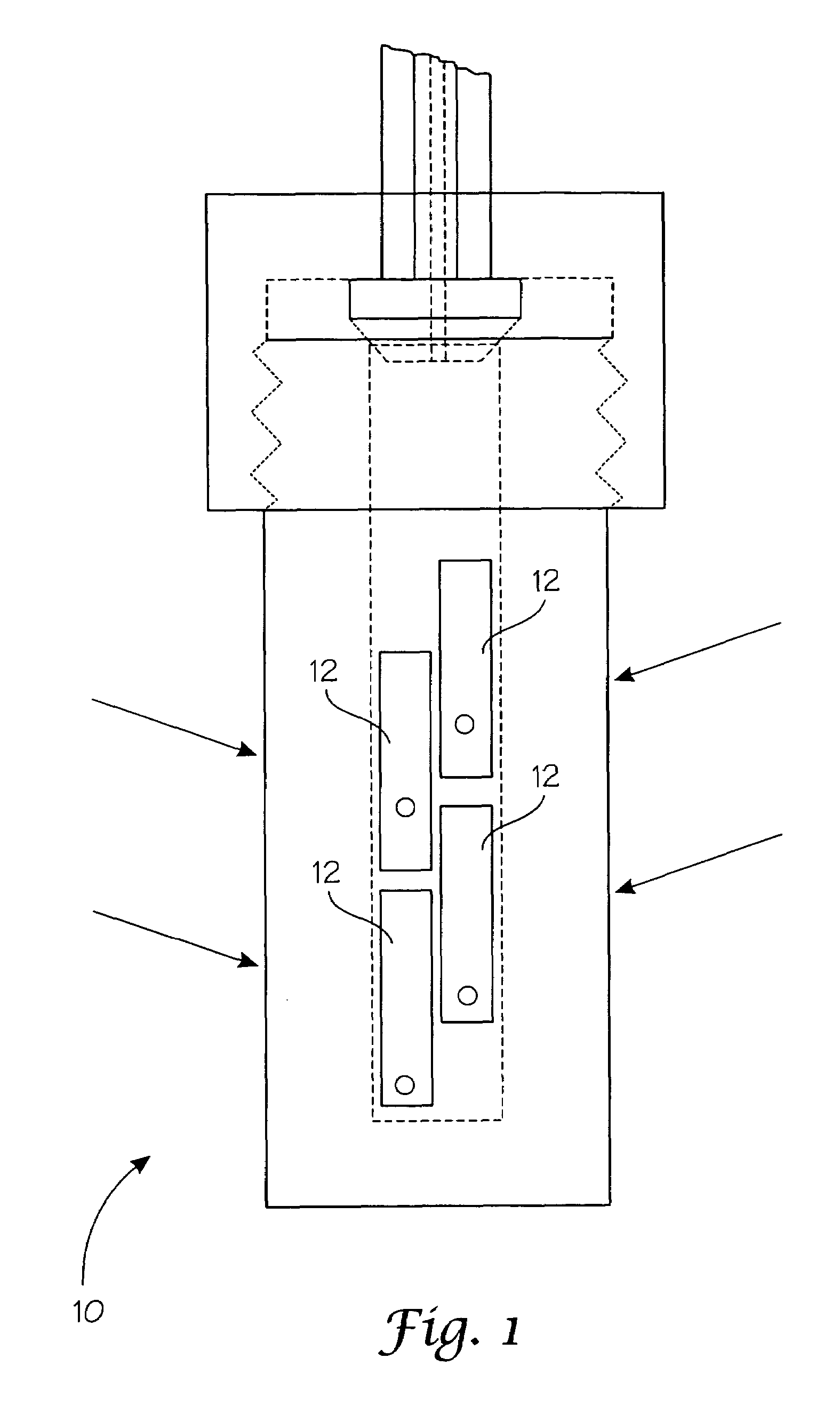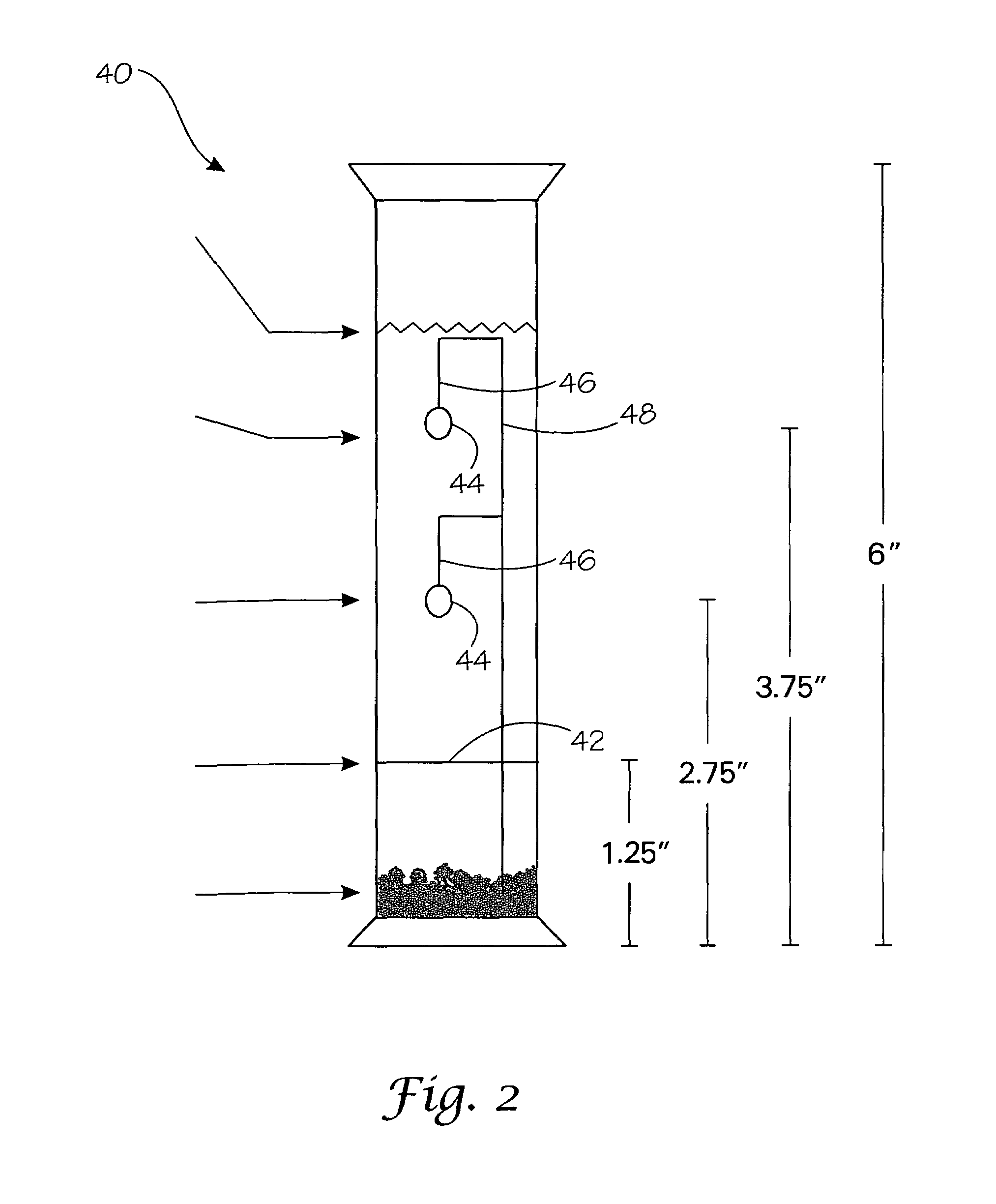Hydrothermal growth of hexagonal beryllium borate crystals for use in laser non-linear optical and birefringent applications and devices
a technology of hexagonal beryllium borate and crystal growth, which is applied in the direction of crystal growth process, polycrystalline material growth, gel state, etc., can solve the problems of limited wavelength range, large size, bulky, and limited laser radiation generation methods, etc., to achieve the effect of sufficient size and quality
- Summary
- Abstract
- Description
- Claims
- Application Information
AI Technical Summary
Benefits of technology
Problems solved by technology
Method used
Image
Examples
example 1
[0036]SBBO starting material was synthesized according to the solid state reaction:
2SrCO3+2BeO+2H3BO3→Sr2Be2B2O7+2CO2+3H2O
The above chemicals were weighed and ground to a homogeneous powder, which was placed in a platinum crucible and heated at 1000° C. for 18 h under air. The resulting white powder was used as the starting material for hydrothermal crystallization.
[0037]SBBO powder from the above reaction was placed in a silver ampoule whose bottom has been welded shut (for ¼″ ampoules, 0.1 g SBBO and 0.4 mL of 1M NaOH mineralizer were used; for ⅜″ ampoules, 1 g SBBO and 4 mL mineralizer were used). After the mineralizer solution was added to the ampoule, the top of the ampoule was crimped and welded shut. Several mineralizers were found to be effective for SBBO crystallization including 1M NaCl, 1M NaOH, 2M NaOH, 1-2M KOH, as well as combinations of these mineralizers. The ampoules were placed in an autoclave and counter pressured with water to prevent the ampoules from bursting (...
example 2
[0038]SBBO crystals made in accordance with Example 1 were drilled and tied using 0.1 mm diameter platinum wire onto a platinum ladder fashioned from 1 mm diameter wire. When hung, the crystals were 5-6 inches above the level of the feedstock. When using the floating liners, no baffle is included on the ladder apparatus because of the uncertainty already introduced by the ampoule's compression under the counter-pressure of 22 kpsi. A powdered or ground microcrystalline feedstock of the formula SBBO made from example 1 or related reactions, or a molten flux reaction. Using 0.1M NaOH and a thermal gradient with 575° C. hot zone and a 525° C. growth zone for six days, over 200 mg of SBBO was transported to the seed to grow a very high quality single crystal. The dimension of the seed increased by several millimeters on each edge over this time period. Once the equilibrium is reached the transport rates are approximately constants so growth of the single crystal continues as long as the...
example 3
[0039]SABBO (Sr(2−x)AxBe2BO3F2, where A is at least one divalent metal ion such as Mg2+, Ca2+, Ba2+, Zn2+, Pb2+, Ni2+, Co2+, Fe2+, or Mn2+) crystals made in accordance with Example 1 (where the Sr2+ was partially substituted with a common source of A2+ in the reactions) were drilled and tied using 0.1 mm diameter platinum wire onto a platinum ladder fashioned from 1 mm diameter wire. When hung, the crystals were 5-6 inches above the level of the feedstock. When using the floating liners, no baffle is included on the ladder apparatus because of the uncertainty already introduced by the ampoule's compression under the counter-pressure of 22 kpsi. A powdered or ground microcrystalline feedstock of the formula Sr(2−x)AxBe2BO3F2, where A is at least one divalent metal ion such as Mg2+, Ca2+, Ba2+, Zn2+, Pb2+, Ni2+, Co2+, Fe2+, or Mn2+. was prepared using exampled 1jk reaction or a molten flux reaction. Using 1M KOH and a thermal gradient with 575° C. hot zone and a 525° C. growth zone fo...
PUM
| Property | Measurement | Unit |
|---|---|---|
| temperature | aaaaa | aaaaa |
| temperature | aaaaa | aaaaa |
| temperature | aaaaa | aaaaa |
Abstract
Description
Claims
Application Information
 Login to View More
Login to View More - R&D
- Intellectual Property
- Life Sciences
- Materials
- Tech Scout
- Unparalleled Data Quality
- Higher Quality Content
- 60% Fewer Hallucinations
Browse by: Latest US Patents, China's latest patents, Technical Efficacy Thesaurus, Application Domain, Technology Topic, Popular Technical Reports.
© 2025 PatSnap. All rights reserved.Legal|Privacy policy|Modern Slavery Act Transparency Statement|Sitemap|About US| Contact US: help@patsnap.com



